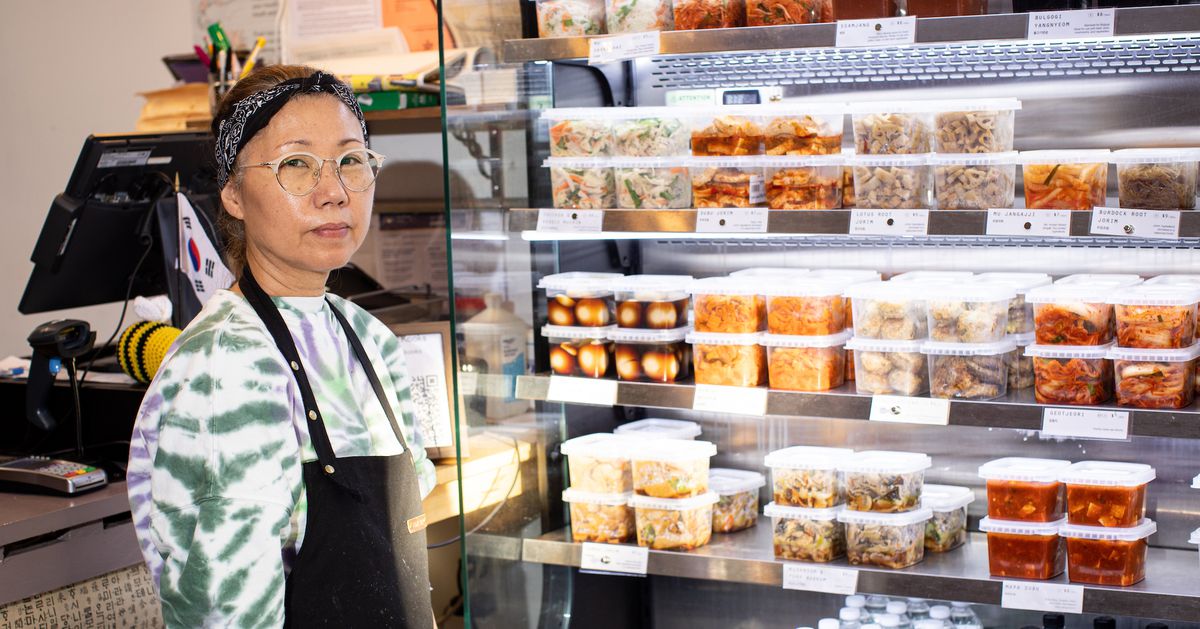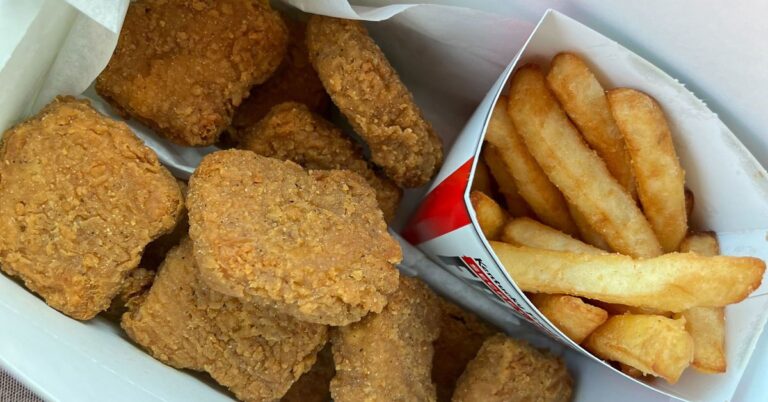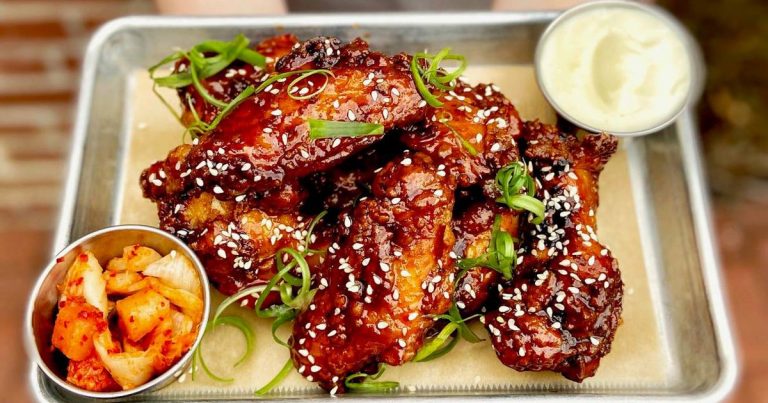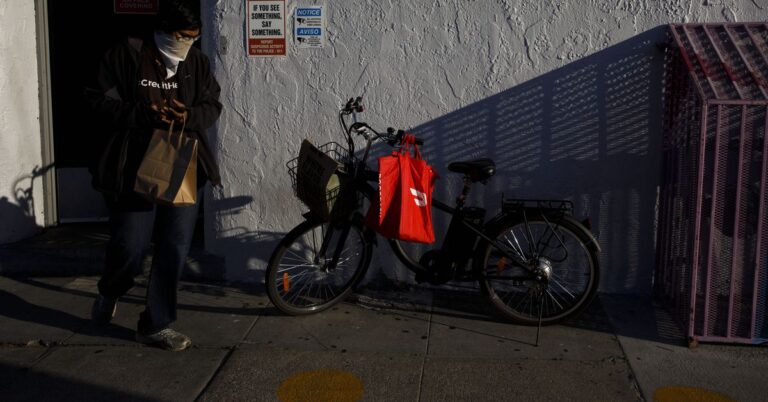How a Chef Is Making Thanksgiving Banchan Despite Sourcing Challenges
As far as kimchi goes, the stuff that Kate Kook makes is pretty famous. Through her small-batch kimchi business Kimchi Kooks, Kate, along with her son, started selling jars of cabbage and white radish kimchi in Brooklyn stores in 2015. They quickly gained a following, which only grew a few years later when Kook started selling her crisp kimchi pancakes at local farmers markets. But during the pandemic, Kook’s commissary kitchen space temporarily closed, and she decided to pause kimchi production to try something new: She’d had enough of being “the kimchi pancake lady,” and wanted to open a shop where she could share a broader vision of Korean cooking — no kimchi pancakes in sight.
Enter Kate’s Kitchen, a tiny storefront on a quiet street in Brooklyn’s Bay Ridge neighborhood, which opened earlier this year. With her own space and two full-time prep cooks, Kook now makes an ever-evolving array of banchan alongside a rotating assortment of hot dishes. (Of course, she also makes jars of her adored kimchi.) And as the holidays come around, Kook is preparing to add Thanksgiving banchan specials to her display. Some of those dishes — like modum jeon, an assortment of savory fried pancakes — are similar to the ones she prepares for Chuseok, the mid-autumn harvest celebration sometimes known as the “Korean Thanksgiving.” Other dishes are of her own invention.
But as the pandemic has thrown a wrench into ingredient sourcing — sometimes sending prices for staples like garlic and scallions skyrocketing — Kook, like countless other business owners, has had to adjust her holiday expectations accordingly. — Elazar Sontag
At the start of the pandemic, I paused kimchi production and moved to the Finger Lakes in upstate New York. It was still deep winter there, and it was more depressing than being in the city: I didn’t do anything, when usually, I’m always working. After a few weeks I was like, I have to come back to New York. Before the pandemic, I cooked kimchi pancakes at the farmers market, but during the pandemic, [coming back to work meant] there was no more cooking — only selling kimchi.
When I opened Kate’s Kitchen, I decided to make small batches of banchan — I have more than 100 recipes for banchan in my head — which is something I never did at the farmers market. During the pandemic, even when things got really bad, I felt like I could lean on my experience working at the farmers markets, and the fact that people know me and trust me.
The most important thing to my cooking — and to my kimchi — is having the right ingredients, and bright colors. I feel like an artist, and this feels like painting. It’s been very hard to source some things [lately], but I don’t want to change the ingredients in my recipes. For example, one case of garlic was $45 before the pandemic. Now it’s $150. Two months ago, I couldn’t even find cases of peeled garlic at all. I asked all the nearby restaurants where they were finding peeled garlic, and they said, “nowhere.” So I bought flats of garlic and peeled it myself. Garlic, ginger, and scallions, I’ll buy at Jetro [restaurant depot], because I’m doing bigger orders. Baechu, the Korean cabbage for my kimchi, I can only find at the Korean market. I can always find the cabbage, but now the price is sometimes $45 per case of eight to 10 heads, when it used to be $20. Scallions, which would usually be $15 or $17 a case, cost $35 right now.
Even the containers I use to package my banchan have doubled in price during the pandemic, but I won’t stop buying them. I feel like I just need to make a little bit of profit. I don’t want to set my prices up and down, up and down, so I’ve kept the same prices on my menu.
I’m starting to get ready for the holidays at my store, and it’s still hard to find some ingredients. This year, I’m making special banchan. I didn’t want to make chicken, or turkey, but I’ll make stuffing full of Korean ingredients: goguma (Korean sweet potato), kabocha squash, crushed dubu (tofu), and sweet rice steamed with rosemary and topped with cranberries and walnuts. I’ll make bibimbap with five kinds of vegetables: It will be green, red, white, and yellow — beautiful colors. We will have a kimchi special, too: Dongchimi, known as “winter kimchi,” a special kimchi traditionally enjoyed during the colder months, made with mu, or Korean radish, in a watery brine. It has a bright, crunchy and refreshing flavor, and you can sip the clear kimchi juice to aid digestion.
But because I have so many recipes in my head, whenever I find certain ingredients but can’t find others, I can still make food. At a bakery, to make a cheesecake, they have to use the same flour, the same cream cheese, and the same decorations. But for my food, if I can’t find an ingredient, I don’t have to make that dish. Every day the banchan is changing depending on what’s available and what looks good.
To decide what I’m going to make for the holidays — or any time of year, really — I walk down the street and go into markets, and when I see certain ingredients I think, “Oh, I have to make that!” I’ll buy a lot of that ingredient, I don’t care if it’s expensive. If I need it, I buy it. Of course I want to make a profit, but if things get more expensive, I’m not going to change my prices. After everybody knows my business and trusts me, maybe I can change the price. I want to show people real Korean food. If they like it, I know I can make money. That’s my plan.
Clay Williams is a Brooklyn-based photographer.






